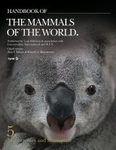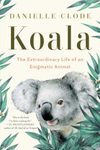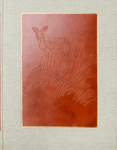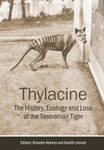![Sthenurus (Macropodidae: Marsupialia) from the Pleistocene of Lake Callabonna, South Australia Sthenurus (Macropodidae: Marsupialia) from the Pleistocene of Lake Callabonna, South Australia]()
Click to have a closer look
About this book
Related titles
About this book
This study of the skeletal remains of three species of the extinct kangaroo Sthenurus (Sthenurinae: Macropodidae) from Lake Callabonna, northern South Australia, details the comparative osteology of these taxa and their functional, anatomical, and phylogenetic implications. Geological study of the locality assigns these fossils to the base of the Quaternary sequence in laminated clay and fine sands that are part of a unit correlated with the Millyera Formation of the Lake Frome area immediately south of Lake Callabonna. These deposits accumulated in a lake of variable salinity, several times the size of the present Callabonna playa. The plant remains associated with the Callabonna Fauna suggest a more arborescent flora than that near the present-day salina but one containing taxa that still exist in the surrounding region. These facts indicate a seasonal climate with fluctuating water table but a regionally more effective rainfall than at present. Direct C14 dating of wood from the Sthenurus-bearing deposits establishes an age beyond the limit of the radiocarbon method and regional geological correlations suggest a medial Pleistocene age within the span 0.2-0.7 Ma as most likely for the sthenurine kangaroos and associated large marsupials and ratite birds that constitute the Callabonna Fauna. Like the other large-bodied vertebrates at Lake Callabonna, the Sthenurus species were mired in the clays while attempting to cross the floor of the lake during low-water or dry times. This mode of accumulation has yielded an unprecedented opportunity for comparative study of the remains of individual animals. Three closely allied sthenurine species coexisted at Lake Callabonna: a new giant taxon, Sthenurus stirlingi, a somewhat smaller S. tindalei, and the considerably smaller S. andersoni. Strong sexual dimorphism is shown by the larger taxa, resulting in size overlap between individuals, but morphological criteria identify the sexes and taxa involved. Comparative osteology of these Sthenurus species with Macropus giganteus emphasizes how different they are from the living gray kangaroo, especially in their short, deep skulls, long front feet with very reduced lateral digits, and the virtually monodactyl hind feet. These distinctions, and many others, limit functional analysis for lack of a closely comparable living model. We have nevertheless tried to gather the evidence into a coherent picture of Sthenurus as a living animal. The cheek teeth of these Sthenurus species fit the browsing grade of Sanson's (1978) model. The slender forelimbs are better fitted for feeding than locomotor function. These limbs could be raised above the head, and the hands, with their long phalanges and claws, could have grasped high vegetation. The vertebral column is more rigid than in living kangaroos and flexion is limited, but considerable extension of the anterior pan of the body could have been retained as an important function in reaching for high browse. The pelvis is modified for flexion and adduction of the thigh, which would support a bulky animal while standing or elevating the body. The hind limb is more massive than in Macropus, but the elements are of similar proportion and there appears to be greater emphasis on the elastic properties of the tendons and ligaments to augment muscular action across joints, especially the knee and plantar parts of the pes. We conclude that species of Sthenurus, like other sthenurines, were bulky, browsing kangaroos that sacrificed quadrupedal or pentapedal movement for greater dependence on bipedal saltation and extension of the body and forelimbs for higher browsing. This diverse subfamily was a prominent element in Pleistocene faunas in Australia. Several taxa of comparable size were often found together which suggests partitioning of the browsing feeding mode – a broad niche that seems to contain few adherents among living large kangaroos.
Customer Reviews









































